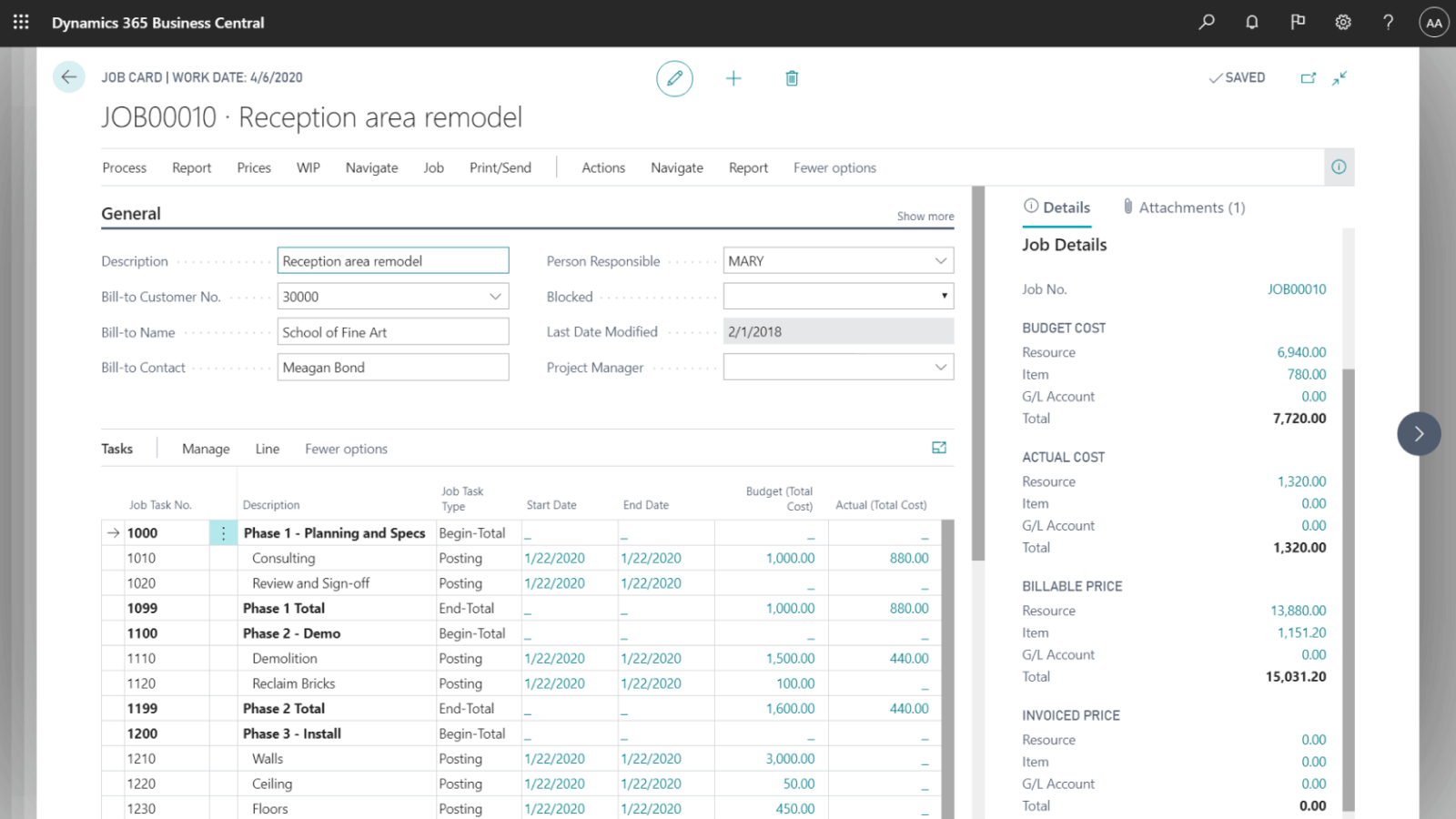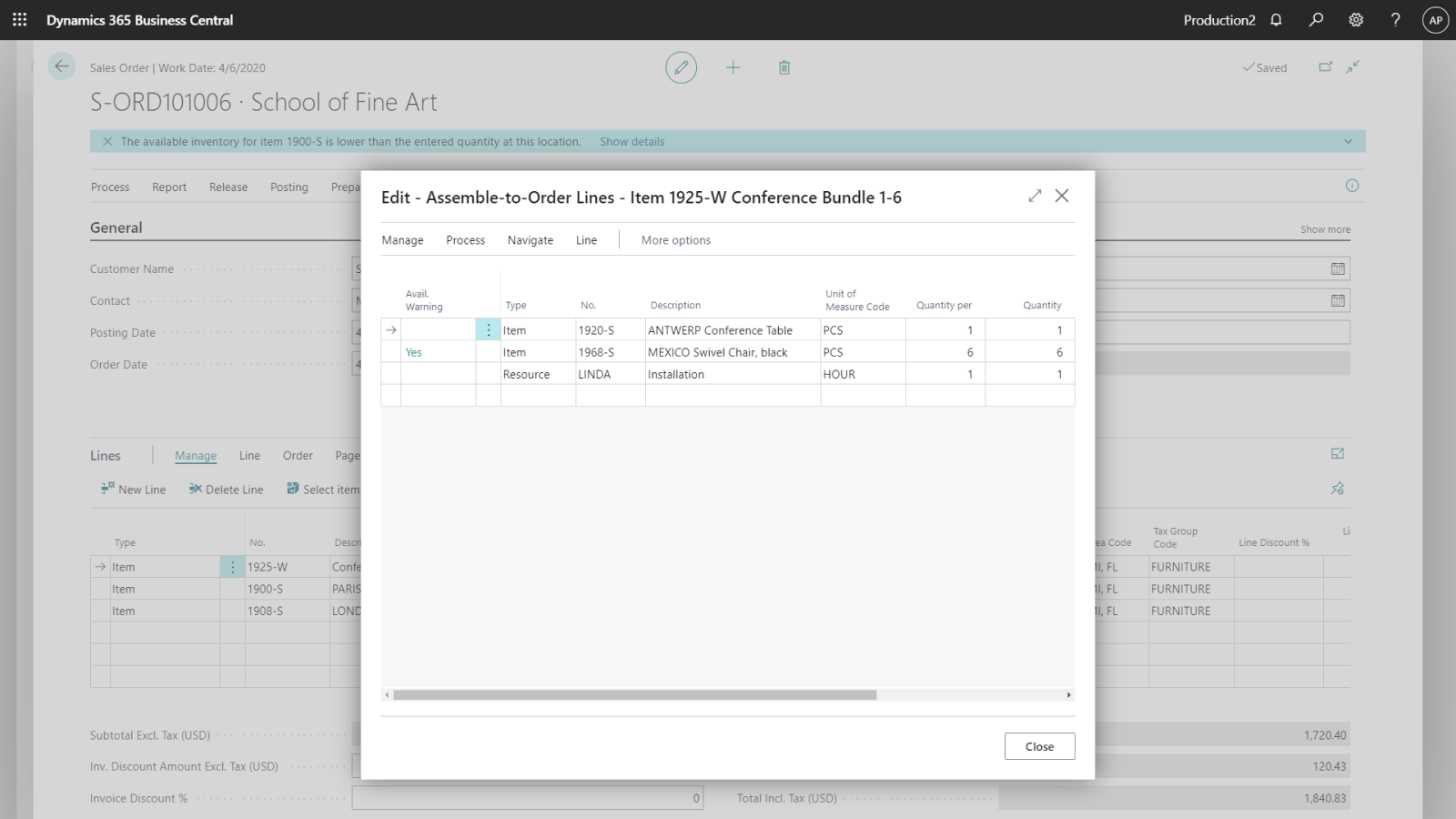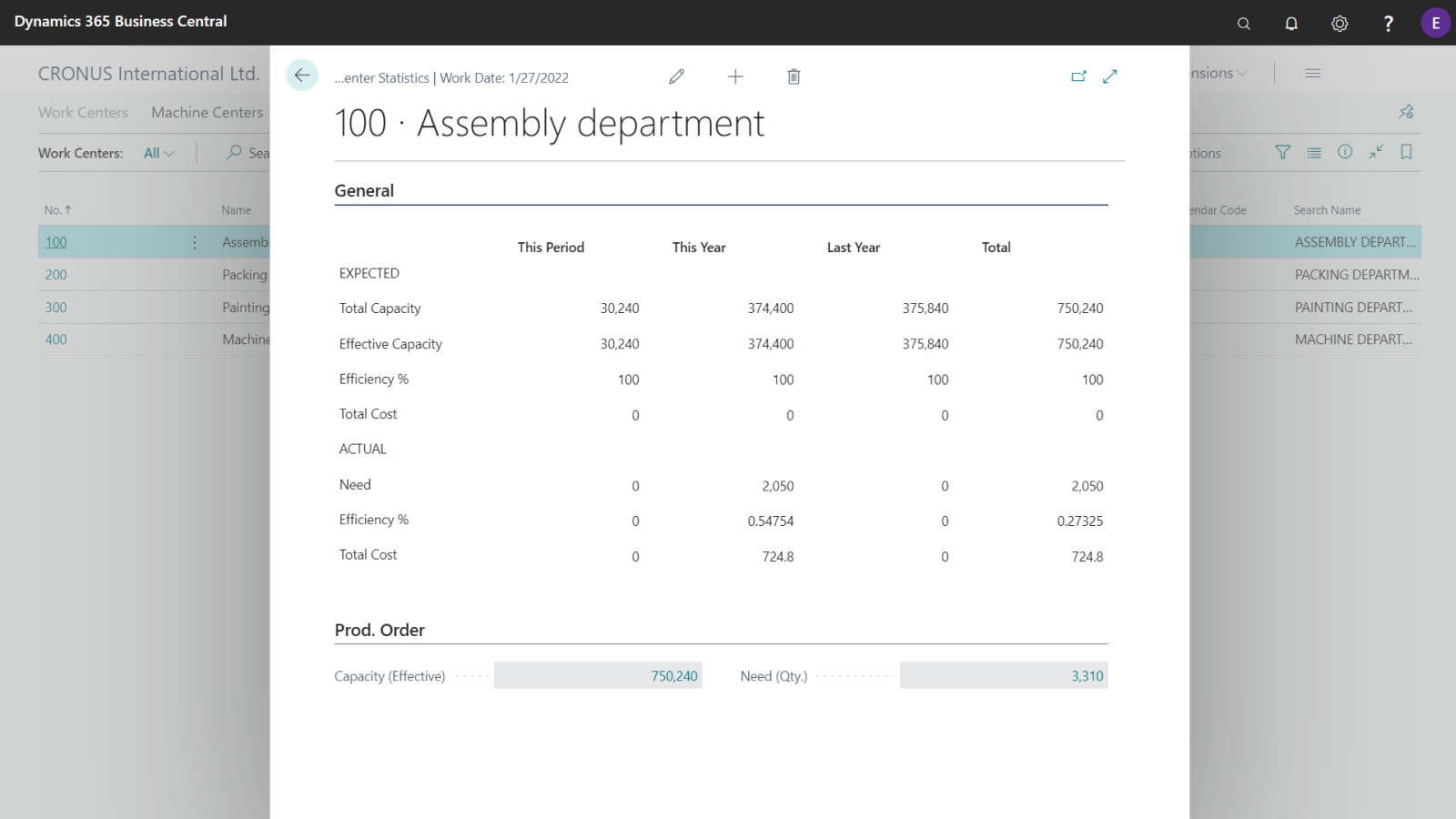Microsoft Dynamics 365 Business Central
Production
Flexible production processes ensure delivery reliability in times of disrupted supply chains
The 2020s pose unforeseen challenges for manufacturing companies: The global supply chains are at times so disrupted that not only raw materials and supplies are in short supply. Long-term planning in production is almost impossible due to short-term adjustments due to a lack of materials and meeting delivery deadlines has become a major effort.
Agile production processes that can react flexibly to changing conditions at any time with digital production planning and control are all the more important. with Microsoft Dynamics 365 Business Central and the many years of industry expertise of our experts, you will manage the balancing act between delivery reliability and cost-effectiveness.
The foundation of a flexible, resilient production lies in the integrated planning and control, which generates the production orders for the final assembly as well as for assemblies from the bill of materials and work plans, schedules them and controls the provision of the materials by your logistics, so that the delivery takes place on time. Thanks to the integration into procurement and disposition, delays in the delivery of input materials are recognized at an early stage and can be incorporated into production planning, as can shifts in capacity.
Depending on the industry, standards and the challenges of production differ significantly, which is why we have prepared the basis with our industry solutions for contract and project manufacturers as well as for series manufacturers and created essential additional functionalities.
Highlights
- Production Planning and Control
- BOM management
- Resource and workstation management
- Capacity planning and control
Get to know Business Central




Do you have any questions or would you like to talk about a project?
The heartbeat of production: production planning and control
- Graphic production planning and control
- KUMAVISION production cockpit with quantity, date and change traffic light system
- In-house production and outsourcing
- Order, assembly and make-to-stock production
- Connection of terminals/IoT systems for recording time and operating data
Together with material requirements planning, production planning and control (PPS) forms the heart of ERP systems. Material requirements planning uses the BOM explosion to determine which materials have to be procured in which quantities and by which dates.
Production orders are generated for end products as well as self-manufactured assemblies, input materials or stock goods, which flow into production planning on the basis of work and capacity plans and determine the processes in production. The actual control takes place through extensive status management of the production orders. By connecting BDE, MDE and PZE terminals, for example, status reports can be automated. This considerably simplifies and accelerates the control work.
In addition, outsourcing or extended workbench orders to external service providers can be planned, commissioned and processed.
In production, too, the flow of values is booked financially according to the flow of quantities - regardless of whether it is self-made assemblies, parts list materials, raw, auxiliary and operating materials, outsourcing or the receipt of the finished end product in the warehouse.
Convenient parts list management secure the basis of production
The basis of flexible production planning and control is provided by the parts lists of products and manufactured goods. Depending on the vertical range of manufacture, multi-level parts lists with self-made assemblies or stock goods as well as procurement materials can be managed. For pure final assembly, single-level assembly parts lists can also be created and used for the assembly process.
The article master data behind it provide, among other things, the material type, procurement and production times as well as the corresponding warehouse data for logistics. In addition, components or assemblies can be linked to operations from routings. In addition, scrap quantities can be taken into account in the production of bulk/stock goods.
To simplify maintenance, parts lists can even be copied on individual levels. In addition, each parts list can be provided with version management, so that no new items have to be created for design changes, for example, but a version change is sufficient.
In our industry solutions you will find far-reaching additions to the standard, such as the bidirectional connection of CAD/CAE and PIM systems as well as change management of construction parts lists.
- Management of multi-level manufacturing BOMs
- One-level assembly BOMs
- Integration of item master data
- version control
- Extensive industry extensions such as CAD/CAE/PIM system connections
Map your production processes using workstations and work plans
- management of jobs
- Management of standard operations
- Management of work schedules
- Company and shift calendar
While the provision of the input materials, assemblies, bulk materials, etc. is planned using parts lists, the production process depends on the production master data from work plans. They contain the work steps at individual workstations, i.e. what is to be done and how much time is planned for it.
In Microsoft Dynamics 365 In Business Central, you can map simple production stations through to complex production plants. The basis for this are work centers and work plans, which together represent the production process of an end product or an assembly.
In this area of the production master data, we have also developed extensive extensions in our industry solutions, which comfortably complete the standard of Microsoft Dynamics Business Central.
Flexibility in case of resource bottlenecks:
KUMAVISION capacity planning and control
By managing the production master data, you have already created the basis for capacity planning and control. When planning, you can take into account known failures, for example due to maintenance work or employee vacations. However, day-to-day business always consists of unplanned capacity outages that you have to compensate for.
For this purpose, we have developed a production cockpit in our industry solutions, with which you can immediately see all changes with the help of a traffic light system and take them into account in our graphic detailed planning.
- Production cockpit with traffic light system
- Graphical detailed production planning
